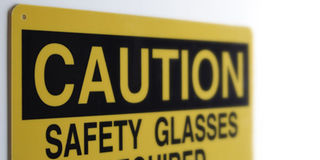How safe are your employees at work?

Safety. Employers are obligated by law to put measures to avoid occupational health and safety hazards.
Photo from safetylineloneworker.com/blog/workplace-hazards/
What you need to know:
Conflict at work. What safety precautions are at your workplace? This is a question that is not asked and answered enough. Safety precautions are good for both the employer and employee. They also save the employers from having to inccur medical costs when an accident happens.
Occupational health and safety should be an important factor that all employees and employers take seriously to avoid cases of disability caused by accidents, inccuring expenses to treat injured employees among others.
Lucas Magezi worked at a wine making plant as one of the people in charge of mixing ingredients. One fateful day, as he mixed fruit extract with boiling water, some of the hot water splashed on him leaving him with third degree burns.
Ruth Balenzi a specialist in occupational health and safety says if employers do not ensure safety of their workers, they are most likely to lose money in insurance claims, suffer production hiccups owing to days off taken by injured employees, have reduced profitability, lose money in paying medical bills as well as making compensations.
She says it is unfortunate that many employees do not know the risks at their workplaces which is absurd.
She advises employers to put the following in place:
Training. Employees should be trained consistently by professionals about occupational health and about probable risks at their work place and how to avoid them.
Hard identification. Look for items and situations that could cause harm or accidents and devise means to address them.
Controls. Institute control measures that help employees avoid accidents and any other health problems that may result. For example, a smoke detector will help save lives in case of a fire outbreak as many will be alerted and will exit the building in time.
Supervision. There should be constant supervision of the work premises to see to it that all safety precautions are being implemented and in case of a breakdown, rectification must be done in time.
Employee obligations
Your actions must not in any way affect other employees. For example, you should not leave a broken bottle in the walkway as someone may step on it and get hurt.
Common causes of injuries
Balenzi notes that seven out 10 of her patients with back pain are office workers.
“The pain is due to the type of chairs they sit on. The chairs harm the spinal cord,” she says.
Hand injuries are also common among office workers due to typing for long hours as well as those from manufacturing companies who suffer injuries caused by machines.
Most office workers are also at risk of sight injuries due to using computers for prolonged periods of time and many bosses suffer from pshyco- social risks due to stress and work pressure. All these need to be addressed by both the employer and employee.
Unfortunately some employers downplay these injuries which could lead to an employee getting disabled due to injuries, mental health due to stress, heart problems, drug abuse (still due to stress).
“No one should be incapacitated owing to a job. Safety measures are a must,” Balenzi says.
In case an incident has already happened, Balenzi advises employers to put measures to avoid reoccurrence.
Benefits for an employer
With a good health and safety system at your workplace, there is bound to be higher profitability since employees are in good health and can work productively.
Employees must implement all the organisation’s health and safety rules and regulations. If these precautions are not in place, employees should demand for them.
Deal with workplace hazards
Toroori Mwirigi, a designated health practitioner says there is a branch in medicine called Occupational Health — which is concerned with the identification, analysis and control of possible health hazards arising to employees at their place of work. Workplace hazards can be categorised into three classes;
Physical and mechanical hazards
These include injuries from the workplace and musculoskeletal problems which are problems that affect the muscles, bones and joints of the body. Noise, poor ventilation, air circulation, exposure to radiation, exposure to heat, sunlight, etc are other examples of physical hazards.
Biochemical hazards
These are caused by exposure to harmful substances such as chemicals that burn skin, cause skin irritation and even cancer.
Exposure to chemicals that pollute the air and cause irritation to the airways and exposure to biological substances when dealing with plants, animals or humans,etc are also in this category.
Psychological issues
The top most psychological issue is stress and burnout as we are not able to cope with work. Other salient but serious hazards are sexual harassment and bullying by work colleagues. This is a major health hazard at work, but largely ignored. Employees need peace of mind to work properly.
Adapted from Daily Nation




